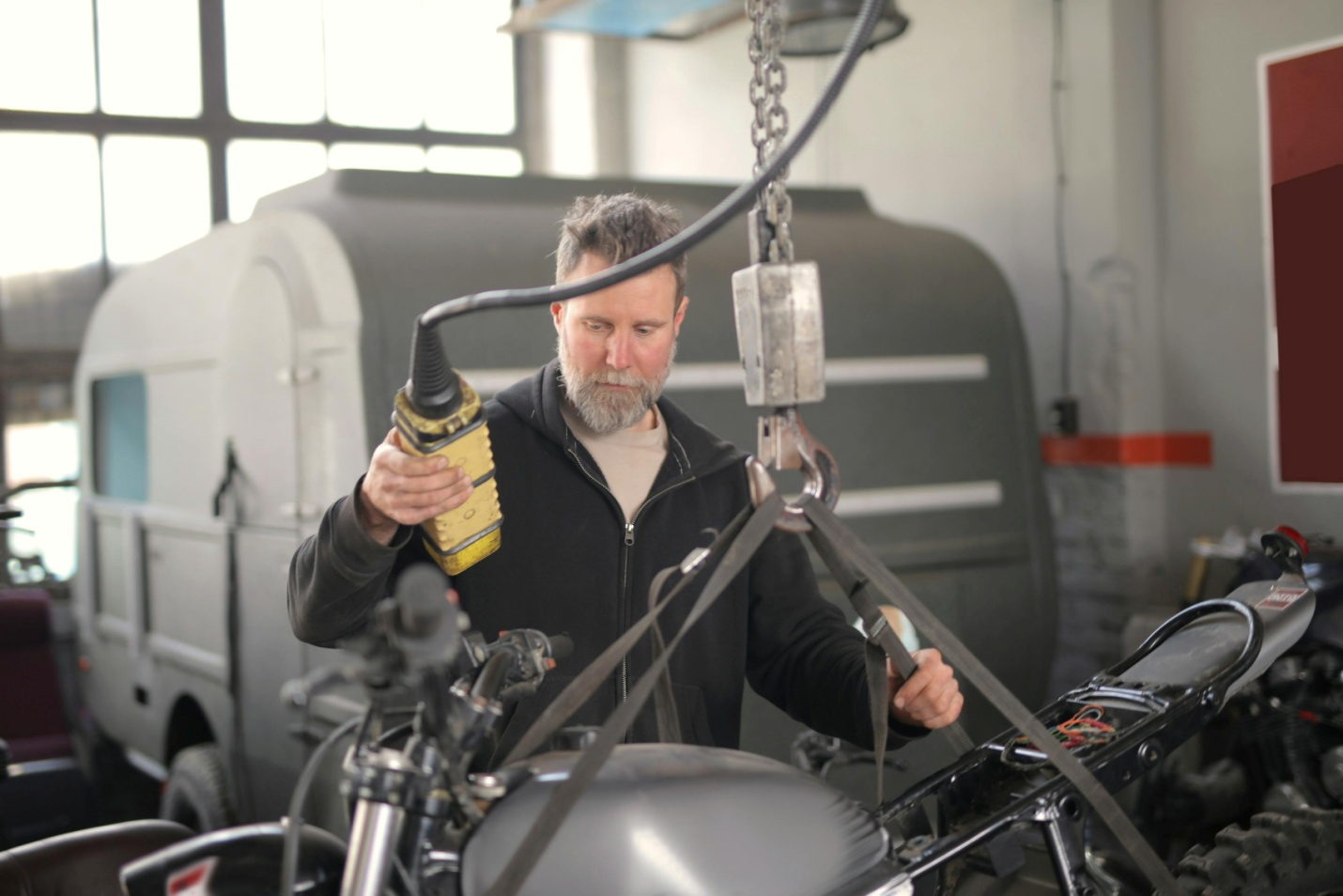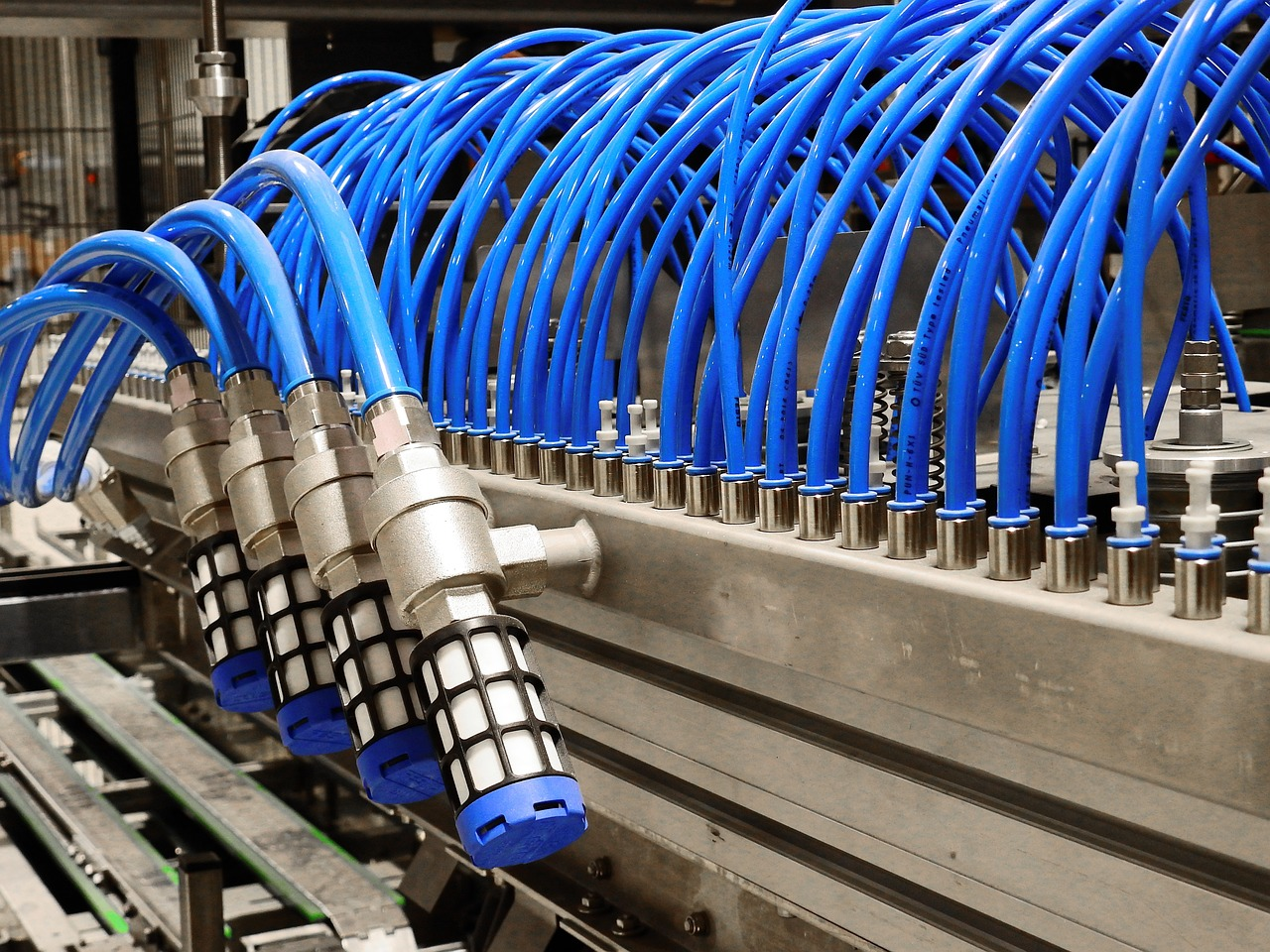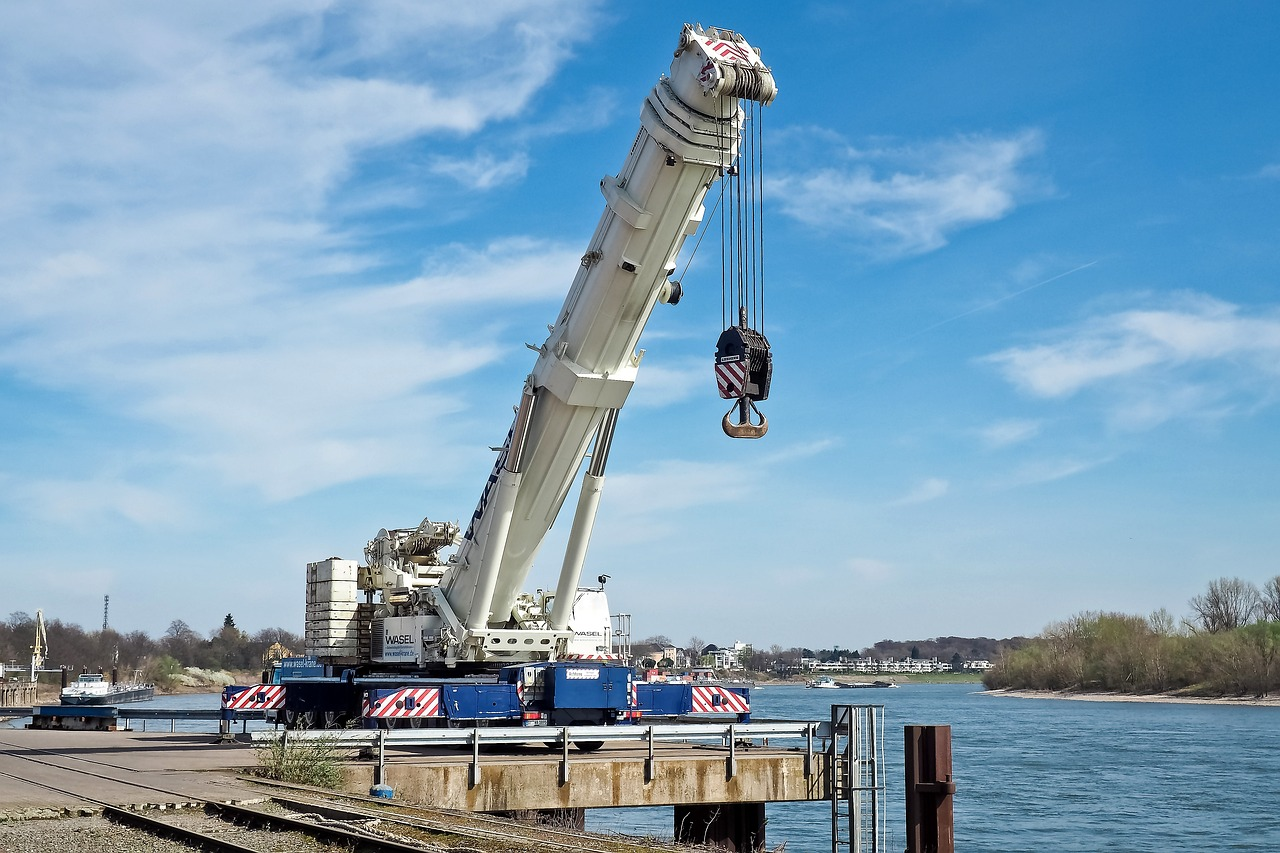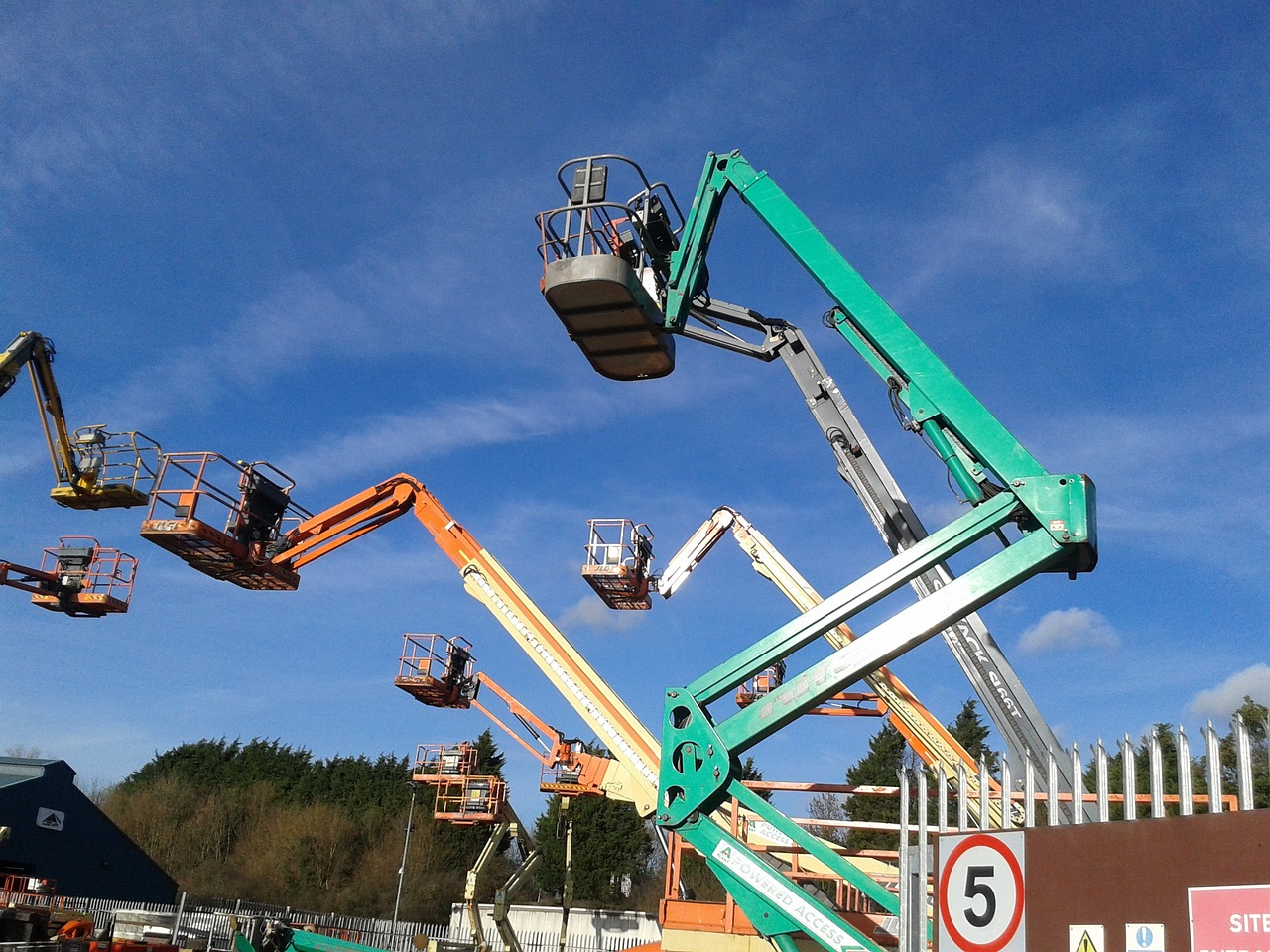The choice between hydraulics and pneumatics as power sources is crucial in material handling equipment, where every ounce of efficiency and power counts. In a warehouse where heavy loads need to be moved swiftly and safely, the power source can make all the difference in productivity, safety, and cost-effectiveness.
Material handling equipment is the backbone of the manufacturing, logistics, and construction industries. From lifting heavy machinery to transporting bulky materials, the efficiency and reliability of these systems are critical for operations to run smoothly. This is where the choice between hydraulics and pneumatics becomes crucial.
Now, let’s dive into the heart of the matter and explore the merits of each power source, shedding light on their advantages, applications, and suitability for various material handling tasks.
In this article, we will delve into the comparison between hydraulics and pneumatics as power sources for material handling equipment. We’ll analyze their advantages, applications, and suitability for different tasks.
Whether lifting heavy loads or transporting machinery, understanding the differences between these two power sources is essential for optimizing efficiency and productivity.
Hydraulics: Powering Efficiency
Hydraulics are a powerhouse when it comes to material handling equipment. They harness fluid power to generate motion or force, making them the go-to choice for heavy load handling and machinery lifting equipment.

Let’s delve deeper into the advantages of hydraulics:
- High Power Density:One of the standout features of hydraulics is their exceptional power density. This means that they can deliver a significant amount of force using relatively compact equipment. Hydraulics offers a compelling solution for industries where space is at a premium or maneuverability is crucial.
- Precise Control:Hydraulic systems provide precise control over both speed and force, allowing operators to execute smooth and accurate movements. This level of precision is invaluable in delicate operations where even the slightest error can have significant consequences. Whether it’s positioning heavy machinery or delicately maneuvering fragile materials, hydraulics provide the control needed for the job.
- High Torque at Low Speeds:Hydraulic systems are renowned for their ability to deliver high torque at low speeds. This makes them particularly well-suited for applications that require immense force, such as lifting heavy machinery or pressing materials. The ability to exert significant force even at slow speeds ensures that hydraulic systems can easily handle the toughest tasks.
- Suitability for High-Force Applications:Whether it’s lifting, pressing, or pushing, hydraulics excel in applications where high force is required to move heavy loads or machinery. From manufacturing plants to construction sites, hydraulic systems are the workhorses that power the most demanding operations.
Pneumatics: Lightweight and Versatile

Pneumatics offers a different set of advantages compared to hydraulics. By harnessing the power of compressed air, pneumatic systems offer a lightweight and versatile solution for material handling.
Here’s why pneumatics are worth considering:
- Clean and Cost-Efficient:Pneumatic systems are known for their cleanliness and cost-efficiency. Unlike hydraulic systems, which rely on hydraulic fluid, pneumatics use compressed air as the power source. This eliminates the risk of fluid leaks or spills, making pneumatics a preferred choice in environments where contamination is a concern. Additionally, the simplicity of pneumatic systems often translates to lower maintenance costs and greater cost-effectiveness in the long run.
- Lightweight Design:Pneumatic equipment tends to be lighter and more compact compared to hydraulic systems. This makes them highly portable and suitable for applications where mobility is essential. Whether transporting materials across a warehouse floor or navigating tight spaces on a construction site, pneumatic systems offer the agility and maneuverability needed to get the job done efficiently.
- Simple Installation and Maintenance:Pneumatic systems are characterized by their simplicity, with fewer components and simpler designs compared to hydraulics. This makes them easier to install and reduces downtime and operational costs associated with maintenance and repairs. With fewer moving parts and less complexity, pneumatic systems offer greater reliability and uptime, ensuring smooth and uninterrupted operations.
- Safe for Hazardous Environments:Pneumatics are inherently safer for use in hazardous environments, as they do not pose the risk of fluid leaks or spills associated with hydraulic systems. This makes them particularly well-suited for applications where safety is a primary concern, such as chemical plants or oil refineries. Additionally, the absence of hydraulic fluid eliminates the risk of fire or explosion in environments with flammable materials.
Choosing the Right Power Source for Your Needs
Now that we’ve explored the strengths of both hydraulics and pneumatics, how do you determine which power source is right for your material handling equipment?
Consider the following factors:
1. Nature of the Task
When assessing the specific requirements of material handling tasks, it’s essential to consider the nature and weight of the loads being handled. For heavy load carrying or lifting heavy machinery, hydraulics offer distinct advantages due to their high force capabilities.
Hydraulic systems can exert immense pressure, making them well-suited for tasks that demand lifting capacities beyond the capabilities of pneumatic systems.
Hydraulic systems are renowned for generating high force at low speeds, making them ideal for applications where precision and power are paramount. Whether it’s lifting heavy machinery in manufacturing plants or transporting large loads in construction sites, hydraulics provides the muscle needed to get the job done efficiently and safely.
On the other hand, pneumatics could be the better choice for lighter loads and more versatile applications. Pneumatic systems may lack the sheer force of hydraulics, but they offer greater flexibility and mobility. They are well-suited for tasks that require rapid movements or frequent changes in direction, such as assembly line operations or packaging facilities.
In summary, the nature of the task dictates the choice between hydraulics and pneumatics. For heavy-duty lifting and handling of massive loads, hydraulics excel, while pneumatics offer agility and versatility for lighter loads and dynamic environments.
2. Environmental Considerations

Environmental considerations play a significant role in determining the suitability of hydraulics or pneumatics for material handling tasks. Cleanliness, contamination control, and operating conditions must be carefully evaluated to make an informed decision.
Pneumatic systems are inherently cleaner and more environmentally friendly than hydraulic systems. Since pneumatics rely on compressed air as the power source, there is no risk of hydraulic fluid leaks or spills, reducing the potential for contamination in sensitive environments such as food processing facilities or clean rooms.
Additionally, pneumatic systems produce fewer emissions and require minimal lubrication, further reducing their environmental impact.
However, in environments where high force is required in harsh conditions, hydraulics may be necessary despite the potential for fluid leaks. Hydraulic systems are capable of operating in extreme temperatures and harsh environments, making them suitable for outdoor applications or industrial settings where pneumatic systems may struggle to maintain performance.
Ultimately, the choice between hydraulics and pneumatics depends on the specific environmental requirements of the material handling task. For applications where cleanliness and contamination control are critical, pneumatic systems are preferable, while hydraulics may be necessary for operations in harsh conditions that demand high-force capabilities.
1. Cost and Efficiency
Cost and efficiency considerations are paramount when selecting a power source for material handling equipment. Evaluating the initial cost, maintenance expenses, and energy efficiency of hydraulics and pneumatics can help determine the most cost-effective solution for your operation.
Pneumatic systems typically have lower upfront costs compared to hydraulic systems. Since pneumatics rely on compressed air as the power source, there is no need for expensive hydraulic pumps, valves, or fluid reservoirs, resulting in lower initial investment costs. Additionally, pneumatic components tend to be simpler in design and easier to install, further reducing installation expenses.
Maintenance expenses also play a significant role in the overall cost of ownership. Pneumatic systems generally require less maintenance than hydraulic systems due to their simpler design and fewer components. Hydraulic systems, on the other hand, may require regular inspection, fluid changes, and component replacements, increasing maintenance costs over time.
In terms of energy efficiency, hydraulics have the edge over pneumatics for heavy-duty applications. Hydraulic systems can deliver high force at low speeds with minimal energy consumption, making them more efficient for lifting heavy loads or operating machinery. However, pneumatics may offer comparable efficiency with lower energy consumption for lighter loads and dynamic operations.
When considering cost and efficiency, weighing the initial investment, maintenance expenses, and long-term energy consumption is essential to determine the most cost-effective solution for your material handling needs.
2. Safety Requirements

Safety is paramount in any material handling operation, especially when dealing with heavy loads or hazardous environments. Both hydraulics and pneumatics have safety features designed to minimize the risk of accidents and injuries, but there are distinct safety considerations for each power source.
Pneumatic systems are inherently safer for use in hazardous environments due to their lower risk of fluid leaks or spills. Since pneumatic systems rely on compressed air as the power source, there is no risk of hydraulic fluid leakage, reducing the potential for environmental contamination or slip hazards. Additionally, pneumatic systems produce less heat and noise compared to hydraulics, further enhancing safety in the workplace.
However, hydraulic systems can be designed with safety features such as pressure relief valves, check valves, and overload protection systems to mitigate the risk of accidents. These safety features are especially crucial in applications requiring high force, such as lifting heavy machinery or handling large loads. Additionally, hydraulic systems can be equipped with emergency stop buttons, safety interlocks, and safety guards to prevent accidents and ensure operator safety.
When considering safety requirements, assessing the specific hazards and risks associated with your material handling operation is essential. While pneumatic systems offer inherent safety advantages, hydraulic systems can be designed with robust safety features to meet the unique requirements of your operation.
Optimize Your Material Handling Efficiency
Choosing the right power source for your material handling equipment is a decision that can significantly impact your operation’s efficiency, productivity, and safety. Whether you opt for the high-force capabilities of hydraulics or the versatility of pneumatics, it’s essential to weigh your specific needs and requirements carefully.
At Hovair Systems, we understand the importance of selecting the right equipment for your material handling tasks. From air-bearing systems to heavy load carriers, Hovair Systems’ solutions are portable, affordable, and eco-friendly, ensuring optimal operational efficiency and safety.
Take the next step towards optimizing your material handling efficiency. Browse our range of products and contact us today to learn more about how Hovair Systems can help you tackle your toughest challenges in moving heavy loads and machinery.
